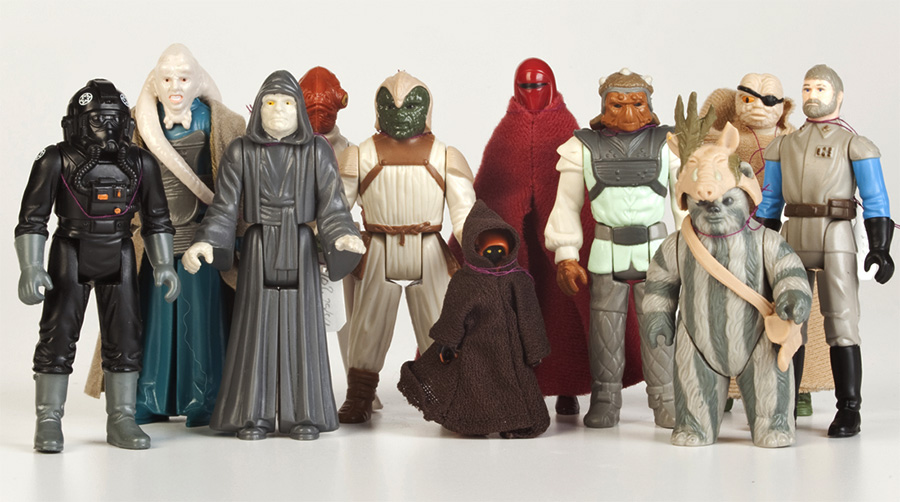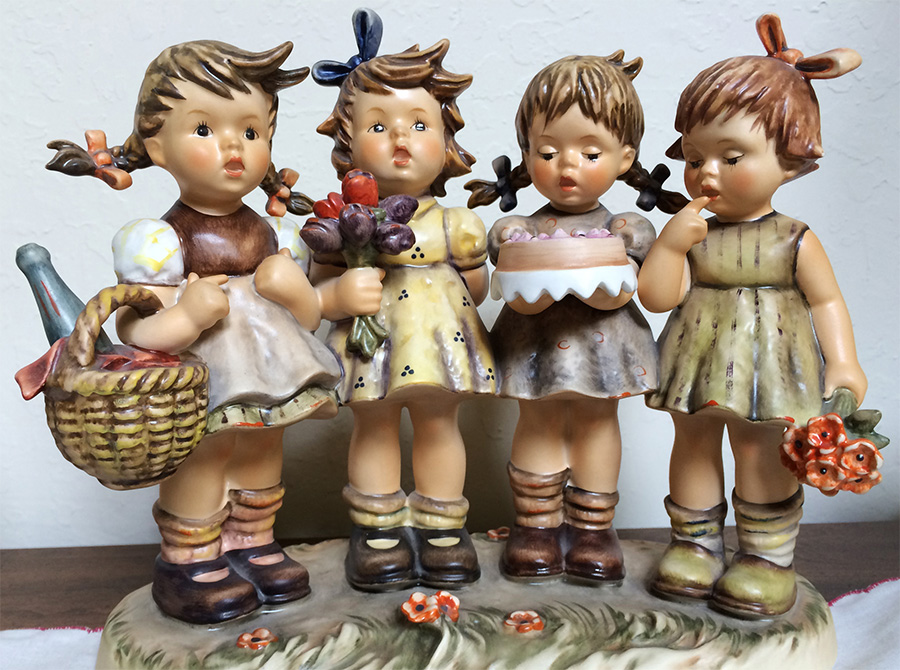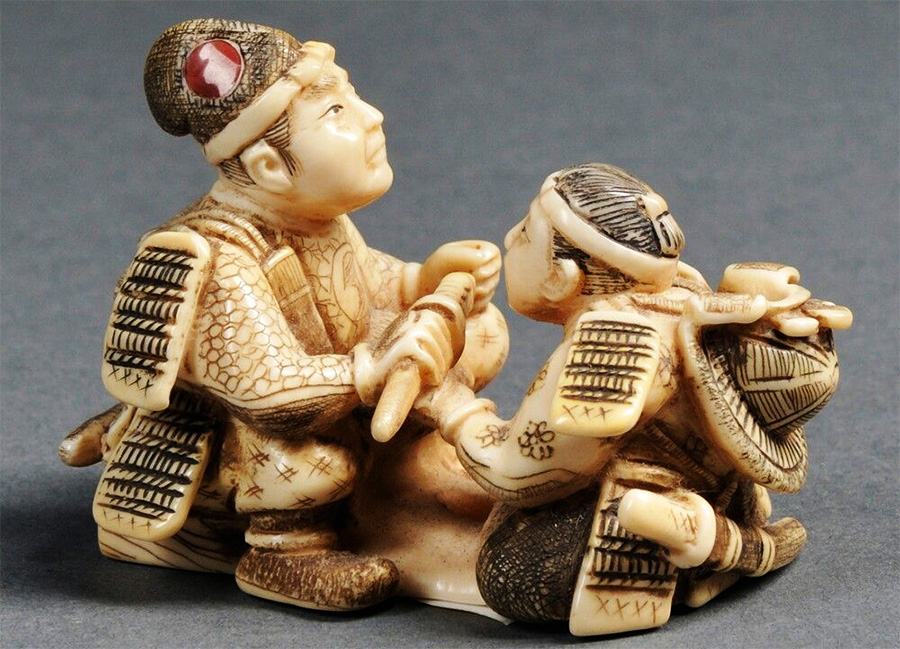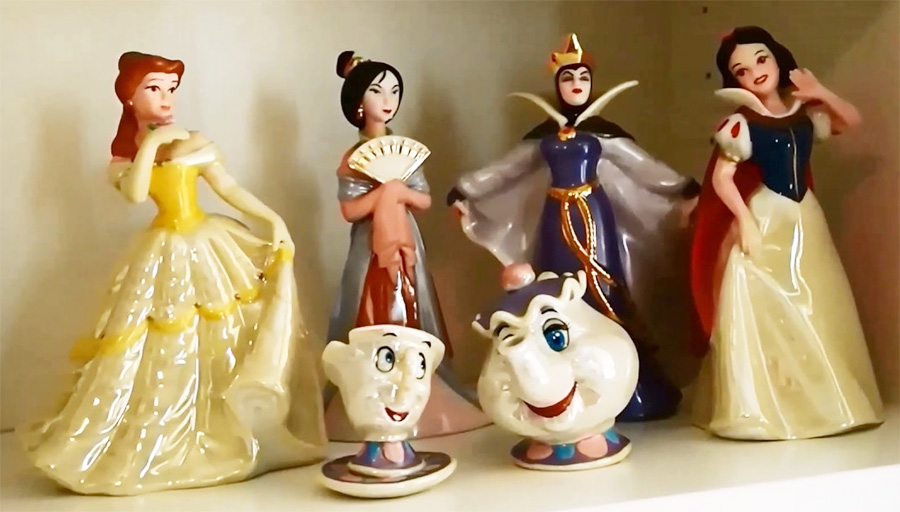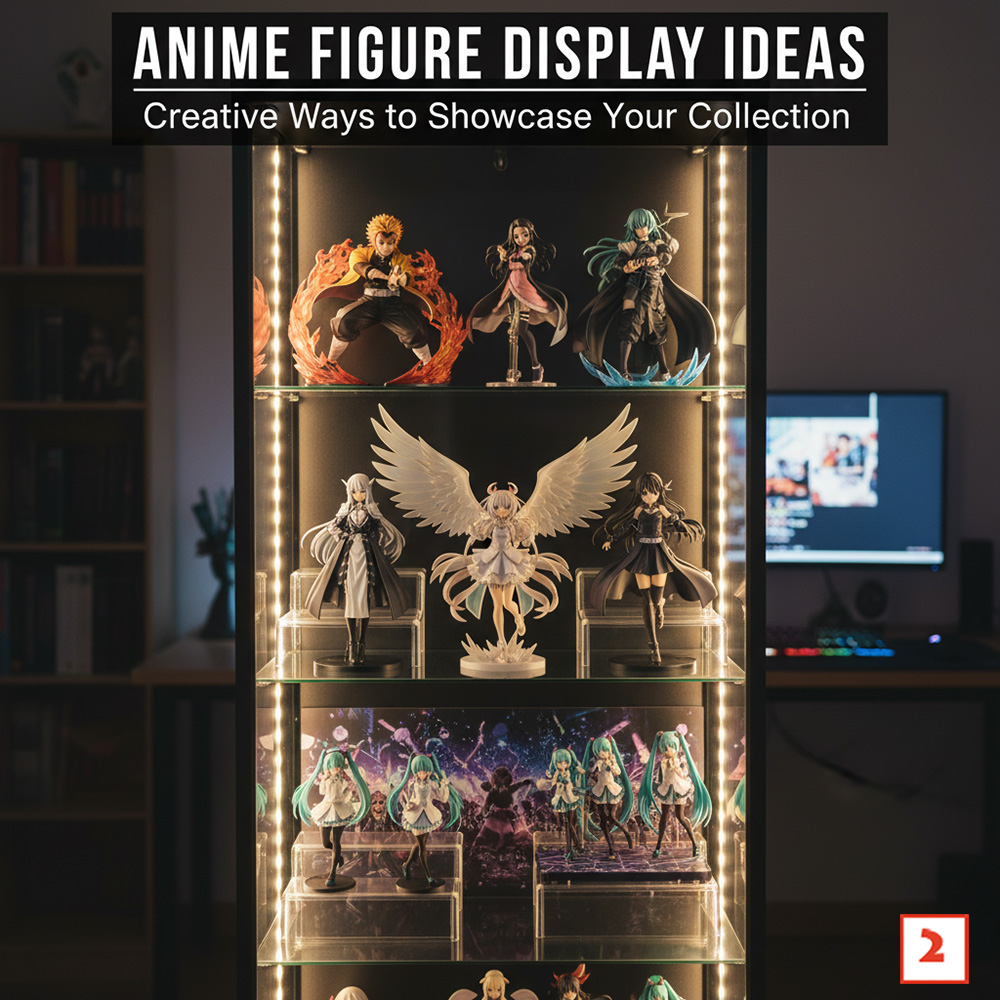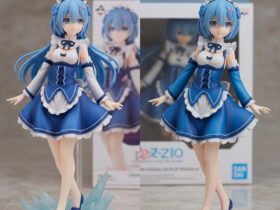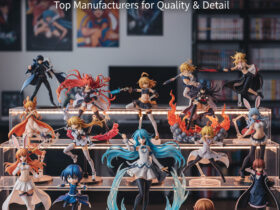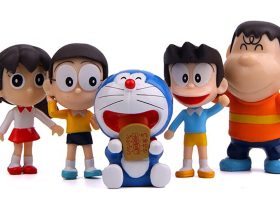For every collector, the journey doesn’t end when a long-awaited figure arrives. Unboxing is just the prelude to the final, rewarding act: finding the perfect place for that character on your shelf. An anime figure collection is more than just an accumulation of plastic; it’s a curated gallery of characters you love, a three-dimensional tribute to incredible stories and artistry. But without a thoughtful display, a priceless collection can look cluttered, while a modest one can look like a museum-quality exhibit.
Turning your collection into a stunning visual centerpiece is an art form in itself. It’s about creating balance, drawing the eye, telling a story, and, crucially, protecting your valuable investments. Whether you have a single prized scale figure or hundreds of Nendoroids, the principles of a great display remain the same.
This comprehensive guide will walk you through every step of the process, from foundational shelving choices to the nuanced magic of lighting and thematic arrangement. Get ready to transform your space and give your figures the magnificent showcase they truly deserve.
The Foundation: Choosing Your Display Space
Before you can think about risers or lighting, you need the right canvas. The furniture you choose is the single most important factor in your display’s overall look, capacity, and safety.
The Collector’s Icon: The IKEA DETOLF
Walk into any seasoned collector’s room, and you’re almost guaranteed to see one: the IKEA DETOLF. This glass display cabinet is legendary in the hobby for good reason.
- Pros: Its all-glass design provides a 360-degree view of your figures, minimizing visual obstruction. The price point is incredibly affordable for a glass cabinet, making it accessible to most collectors. Its vertical design is space-efficient, and the glass door offers excellent protection from dust.
- Cons: The four fixed shelves can create a lot of wasted vertical space, especially for smaller figures like Nendoroids. The glass construction, while beautiful, can feel fragile, and assembly requires care. It’s also notoriously heavy.
- Pro Tip: You can easily customize a DETOLF. Many collectors purchase additional shelf clamps or use acrylic risers to add extra levels, effectively doubling its capacity.
The Versatile Workhorse: The IKEA BILLY Bookcase
Another IKEA staple, the BILLY bookcase, is a fantastic and versatile option, especially when fitted with glass doors (like the MORLIDEN or OXBERG models).
- Pros: Highly customizable with adjustable shelves, allowing you to tailor the height of each section perfectly to your figures’ scales (1/8, 1/7, 1/4, etc.). It’s wider than a DETOLF, offering more horizontal space for larger or wider figures. The solid back and sides are perfect for mounting backdrops and hiding lighting cables.
- Cons: Less visibility from the sides compared to a DETOLF. The wooden frame can create a bulkier look.
- Pro Tip: White BILLY bookcases are particularly popular as they create a bright, neutral backdrop that makes the colors on your figures pop.
Other Display Options
- Floating Shelves: Excellent for a minimalist aesthetic or for highlighting a few special “grail” figures. They draw the eye and can be arranged in creative patterns on a wall. However, they offer no dust protection and require secure wall mounting.
- Cube Shelving (KALLAX): Great for creating individual “dioramas” in each cube. You can theme each box to a specific series or character.
- Custom-Built Shelving: For the truly dedicated, building your own display offers ultimate control over dimensions, materials, and integrated features like lighting.
The Art of Elevation: Why Risers Are Non-Negotiable
Have you ever seen a collection where figures are simply lined up in rows? The ones in the back are completely obscured, and the whole display looks flat and crowded. The solution is simple and transformative: acrylic risers.
Risers are transparent platforms that elevate your figures, creating multiple tiers on a single shelf. This is the single most effective way to improve visibility and add professional-looking depth to your display.
Types of Risers:
- Tiered Steps/Staircases: These are the most common type, resembling a small set of stairs. They are perfect for displaying lines of similar-sized figures, like a full set of Nendoroids or prize figures, ensuring everyone from the front row to the back is perfectly visible.
- Individual Pedestals: These are single, solid blocks or cylinders of acrylic. They are ideal for creating varied height within a more dynamic display. You can place a character on a taller pedestal to make them a focal point or use smaller ones to give a slight boost to figures that would otherwise be hidden.
- U-Shaped Risers: These create a simple bridge, allowing you to elevate a figure while leaving space underneath for another one, maximizing your shelf real estate.
Choosing the Right Risers:
- Measure First: Before buying, measure the depth and height of your shelves. Ensure the risers you choose will fit comfortably.
- Consider the Weight: While most figures are light, larger 1/4 scale resin statues can be heavy. Make sure your risers are made of thick, sturdy acrylic that won’t bow or crack under the weight.
- Aesthetics: Most risers are clear to be as unobtrusive as possible. However, you can also find black or white risers, which can create a bold, museum-like effect, especially in a matching white or black bookcase.
Let There Be Light: Illuminating Your Collection
Lighting is the secret ingredient that turns a good display into a breathtaking one. It brings out the subtle paint shading, highlights the intricate details of a sculpt, and creates a dramatic, gallery-like atmosphere. Putting expensive figures in a dark cabinet is like hiding a masterpiece in a closet.
Popular Lighting Solutions:
- LED Light Strips: This is the most popular method for lighting cabinets like the DETOLF or BILLY. These long, flexible strips have an adhesive backing, making them easy to install along the interior frame of a cabinet.
- COB vs. SMD: Look for COB (Chip on Board) LED strips. They produce a continuous, seamless line of light, eliminating the “dotted” or “spotty” effect seen with older SMD (Surface Mounted Device) strips.
- Color Temperature: Pay attention to the Kelvin (K) rating. 4000K (Neutral White) is widely considered the sweet spot for figures. It’s a clean, natural light that renders colors accurately without being too cold/blue (like 6000K+) or too warm/yellow (like 3000K).
- LED Puck Lights: These are small, circular, self-contained lights. They are often battery-powered and remote-controlled, making them a great wireless option. You can stick them to the top of each shelf to cast light down onto the figures below. The main downside is the need to regularly change batteries.
- Spotlights: Small, adjustable spotlights can be used to dramatically highlight a single, large-scale statue or a central figure in a display, creating a powerful focal point.
Installation and Cable Management
A brilliant lighting setup can be ruined by messy, visible cables. Plan your installation carefully.
- In a BILLY bookcase, you can often drill small, discreet holes in the back or corners of the shelves to run wires between levels.
- In a DETOLF, you can run a single LED strip up one of the metal support rods.
- Use white or clear cable clips and raceways to hide wires along the corners and edges of your shelving unit, making them virtually invisible.
Protection and Preservation: The Fight Against Dust
Your figures are investments, and their greatest natural enemy is dust. A thick layer of dust doesn’t just look bad; its particles can be abrasive and can permanently settle into the tiny crevices of a figure over time.
The Best Defense: Glass Doors
The most effective way to prevent dust is to keep it out in the first place. This is why glass-door cabinets like the DETOLF and the BILLY/MORLIDEN combination are so highly recommended. They can reduce your dusting duties from a weekly chore to a semi-annual touch-up.
Essential Dusting Tools and Techniques
For open-shelf displays or for cleaning the figures themselves, you need the right tools to avoid causing damage.
- NEVER use canned air. The powerful propellants can be ice-cold and can instantly damage or even crack the paint on your figures.
- Soft Makeup Brush: This is the collector’s number one tool. A large, fluffy makeup brush is incredibly soft and perfect for gently sweeping dust off surfaces without scratching the paint or breaking fragile parts.
- Camera Lens Air Blower: This handheld rubber bulb provides gentle puffs of air, perfect for blowing dust out of hard-to-reach areas like intricate hair sculpts or the folds of clothing.
- Microfiber Cloth: For wiping down the shelves and glass doors themselves, a microfiber cloth is essential.
Creating a Narrative: Themed Displays
Now for the fun part: arranging your figures. A thoughtful arrangement tells a story and is far more engaging than a simple lineup.
Arrangement Ideas:
- By Series: This is the most common approach. Dedicate entire shelves or cabinets to a single franchise like Fate/Grand Order, My Hero Academia, or Re:Zero. This creates a powerful, cohesive look that celebrates your favorite worlds.
- By Character: Do you have a “best girl” or “best boy”? A shelf dedicated to every figure of a single character (like Hatsune Miku or Rem) can be incredibly striking.
- By Color: Arranging figures based on their dominant color scheme can create a stunning visual gradient or a bold, monochromatic display. Imagine a shelf of figures all featuring vibrant red, transitioning into oranges and yellows.
- Create a Scene: This is where you can truly get creative. Pose articulated figures (like figmas) in a dynamic battle. Place characters who are friends or rivals next to each other to evoke their relationship from the source material. Use effect parts (sold separately or included with figures) for energy blasts, sword slashes, and explosions to build a truly epic scene.
Using Backdrops and Props
Elevate your themed display by adding a background.
- You can print high-resolution scenes from an anime or game and place it at the back of your shelf.
- Textured scrapbook paper or fabric can create a simple yet elegant backdrop.
- Small, in-scale props (miniature furniture, streetlights, etc.) can help build a diorama and bring the world your figures inhabit to life.
A Constantly Evolving Gallery
Your anime figure display is a deeply personal extension of your passion. It’s a living project that will evolve as your collection grows and your tastes change. The ideas presented here—from the foundational choice of a DETOLF to the artistic flourish of a themed scene—are not strict rules, but tools and inspiration for your own creative journey.
Don’t be afraid to experiment. Rearrange your shelves, try a new lighting angle, build a small diorama. The goal is to create a space that brings you joy every time you look at it. Here in the Philippines and around the world, this hobby connects us through shared passion, and a well-crafted display is the ultimate celebration of that passion. You’ve invested in these incredible pieces of art; now is the time to give them the gallery they deserve.

